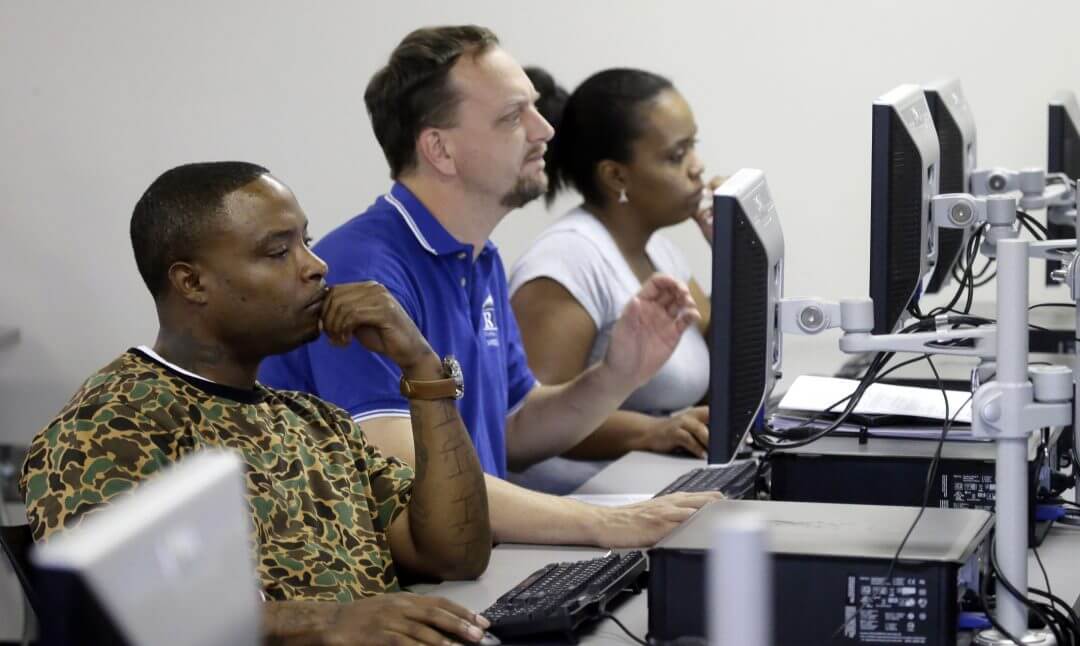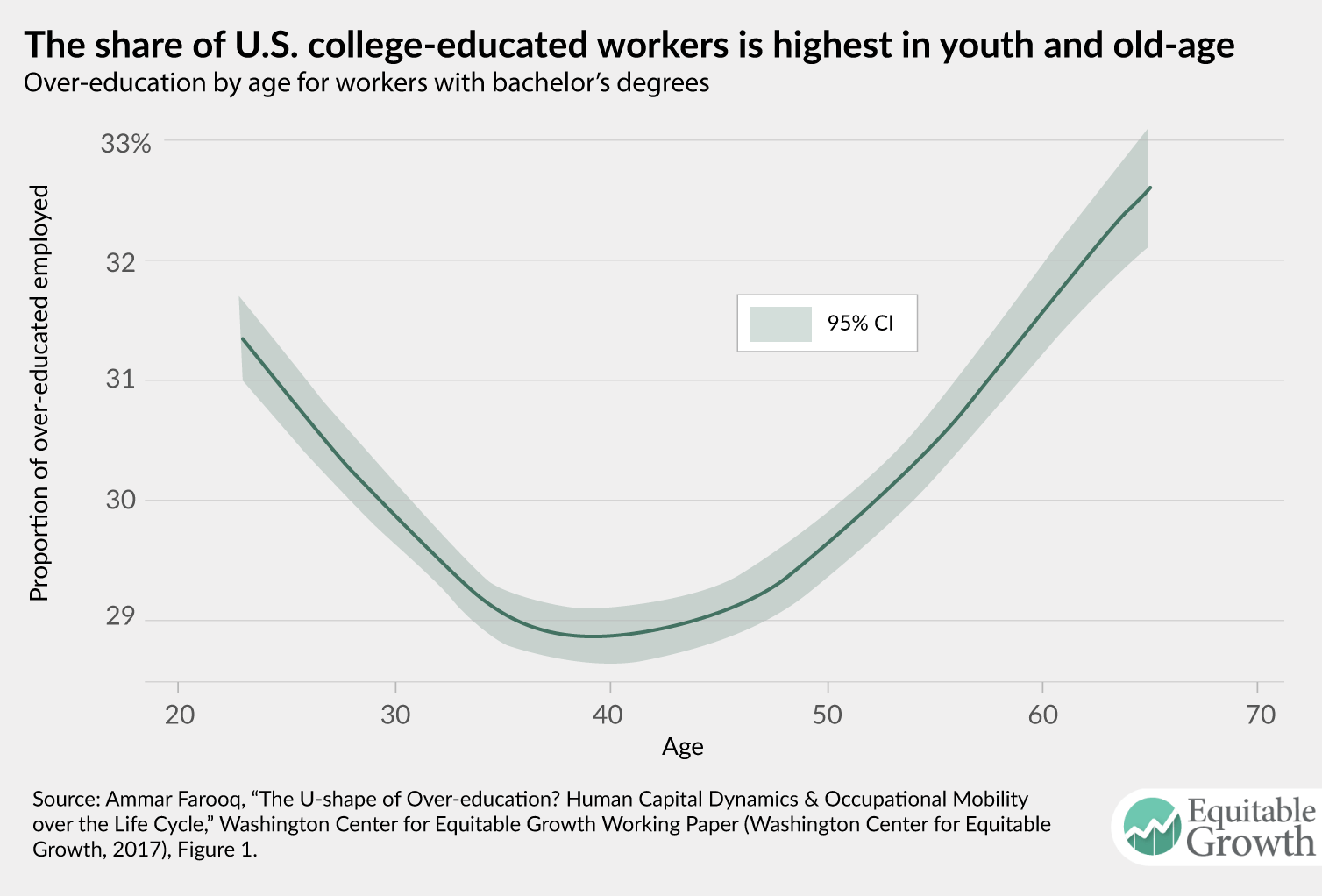
“Equitable Growth in Conversation” is a recurring series where we talk with economists and other social scientists to help us better understand whether and how economic inequality affects economic growth and stability.
In this installment, John Schmitt, then Equitable Growth’s research director, talks to Sandra Black, the Audre and Bernard Rapoport Centennial Chair in Economics and Public Affairs and professor of economics at The University of Texas at Austin. They talk about Black’s experience as a member of former President Barack Obama’s Council of Economic Advisers, her transition from academia to the policymaking world, and what she’ll take away from her time on the CEA.
John Schmitt: So you studied economics as an undergrad at the University of California, Berkeley, you got your Ph.D. in economics at Harvard. You went from assistant to full professor at the University of California, Los Angeles, before getting named a chair at UT-Austin. It’s, I think, fair to say that you are very steeped in academia and very successful as an academic economist! What made you decide to take a break from that world and come to Washington to work on economic policy on the Council of Economic Advisers?
Sandra Black: It was an unexpected change. I had been asked in the past if I was interested in working for the Department of Labor. But at that time I wasn’t interested, I think in part because I was really focused on the academic track and my research, and I didn’t feel like I could afford the time off. So this time, I got an email from [member of the CEA] Betsey Stevenson saying, “Do you have a minute to chat?” When we talked, she said, “I’m leaving the Council of Economic Advisers; might this be something that you were interested in?” And I had that moment of “Well, I’ve said ‘no’ in the past, but maybe now.”
It was actually not something that I had always thought I wanted to do. I really like doing research. I really like being a professor. I was quite happy with what I was doing. This seemed very scary in a lot of ways because it was so different and unfamiliar to me, having not done anything like this before. It felt like being thrown into the ocean and trying to learn to swim, not even the swimming pool. This is the ocean.
I decided to visit the CEA. I was going to give a talk in New York and decided to fly to DC to meet Jason Furman and other people at the CEA. I remember walking up to the Eisenhower Executive Office Building, wearing a suit that I had to buy for this very purpose and thinking that this was such a strange life that I could not imagine at all. And at the time, I met with [former Director of the National Economic Council] Jeff Zients; I met with [former Senior Adviser to the President] Valerie Jarrett; and I did not realize how influential they were because I was not part of that world at all. But it seemed so different, and it seemed like an opportunity that I couldn’t pass up. It felt really important.
So I said yes, and all of a sudden my life totally changed.
Schmitt: How so?
Black: It was really a shock, coming here. The whole transition was really overwhelming. There’s no sense of privacy. Someone is scheduling you every 15 minutes, and there are no bathroom breaks unless you ask them to schedule in a bathroom break. The tasks that you perform, even the lifestyle, are very different. Even the way you think is very different—you are thinking about 20 different projects all within one day, so you don’t get to think deeply about things. As an academic, we spend a lot of time focusing on one topic and try to become an expert on that topic. At the CEA, you don’t have the luxury to spend so much time on one topic. Instead, you have a more superficial knowledge about a lot of things. I would work late at night or in the early morning to try to expand my knowledge and process an issue so that I would be better prepared for a meeting the next day.
That’s a skill that I think academics may have, but we don’t exercise that muscle very much. It took me a while before I was comfortable going into a meeting without a deeper understanding of the topic, with only a basic understanding. A lot of policy involves basic economic principles or basic research. Interestingly, the transition back to academia has required undoing all that. And I found that hard. At the beginning, just sitting and thinking about one project for a whole day, it was hard for me to focus on one topic for so long. And it used to be that I was really good at that! That’s what I could do, and that’s what I liked. I was joking that it’s only been in the last three weeks that I can really sit for a day and just do research on one project.
So it’s been a really interesting transition in and transition out.
Schmitt: You described having a kind of broad set of things that you had to do each day and not the same depth that you might do in academics. But for people who are unfamiliar with the CEA, what is it that you do as an economist there? What kind of questions do you get asked? How much time do you have to answer them? And how do you answer them?
Black: There are a number of different tasks that we perform on the Council of Economic Advisers. One is if there is a policy process, where we discuss the pros and cons of different policy options. In this case, there would be meetings, and the CEA would have representatives at these meetings. And so someone like Greg Lieserson [then a senior economist at the CEA, now at Equitable Growth], who had been to a number of meetings on a topic, would come and talk to me and say, “This is where we are, this is what I think, here’s what you need to know,” and then I would go and represent the CEA at a meeting. Sometimes it would be a big picture meeting, where we were talking about the big picture of “What do we think about this policy?”, and other times it would be very detail-oriented on a specific policy.
Often, I was briefed by people on our staff who knew a lot of the details so that I would go in there knowing about the topic. This was really different from my life as an academic, where I do my own research and is something that I really like about being an academic. I like to look at the data so I know what’s going on, and then I feel comfortable standing up and talking about it. In the world of the CEA, someone is telling you “This is the research.” And sometimes you have time to actually look at the research, but a lot of times things are time-sensitive and you’re taking what they tell you and saying “Okay.” So you count on having good colleagues you can count on, which is really important and something I valued very much about being at the CEA.
So that’s the policy process. Another aspect of my job was representing the CEA on public panels, talking about the policies that we were promoting. And that, to me, again involved a very different set of skills because that’s very public-facing. At the CEA, I was representing the Obama administration, not just Sandy Black. I needed to be prepped in terms of how to respond to questions, which was very strange to me because, as an academic, you’re very used to just kind of saying whatever’s on your mind. You can see that that might not always be a good strategy if you are representing the administration.
When I started at the CEA, my first presentation was at the Brookings Institution on the research the CEA had done surrounding the updating of the College Scorecard. I was presenting a paper that the CEA had produced, and it was an excellent document, but I was actually not there when they had done most of the work. Going and presenting something that was not my own work was really challenging. And again, I think I got better over time, but these are all skills that you don’t go in necessarily having.
We also would do internal analysis, keeping the administration up to date on what the research is saying, or what’s going on with the economy, writing memos for the president or for the other principals. I think this was something I was most comfortable with because that’s really using the expertise that I felt I already had.
Schmitt: You talk about the internal policy process, about representing the CEA and the administration, and about keeping the administration up to date on what the research is saying. What role does research play across these three areas? Does it help? Does it hurt? Is it beside the point?
Black: I was really heartened by the fact that people value research—I did not know if that would be the case when I arrived. There were a number of good surprises that I discovered early on. One was that I really felt like the people working for the Obama administration genuinely wanted to help people. We may not always have agreed on what the best way to do that was, but I always felt like people were coming from a good place, which was really nice. As an outsider, I did not think that was necessarily what I was going to find. And I really liked working with them.
The other thing that was a really nice surprise was that people did value research, even when the research didn’t support the policy they wanted. They would say, “Okay, this new research may provide information about a specific policy, and it is good to know this. Do we still want to support that policy?” Policies can have some negative consequences and still be overall good policies, so you then want to try to mitigate these negative consequences. But it’s important to know what the consequences are, right? You’re always better off knowing what might happen than not knowing.
And so I really feel like the policymakers that I met and worked with seemed to really value that approach to research. I don’t know that it’s a universal quality, but it was certainly something that was gratifying as an academic and made me feel like that’s something I’d like to continue, making the link between academic research and disseminating it more broadly to policymakers.
Schmitt: Which leads to a natural question: Have you learned things here that will help in your teaching or in your research when you go back into academia?
Black: I think it definitely spills over. I mean, I can show students pictures of me with the president.
(LAUGHTER)
I think it will definitely help with my teaching, in that people like real-world examples and now I have them. Now I can say, “And then President Obama said this,” and how can you not believe that a topic is important when you know that it’s something that the president was thinking about? I think it makes the topics more relatable. And I teach undergrad econometrics, usually, which is not a super-hot topic, which makes my ability to use real-world examples even more important, highlighting the econometrics we use when making suggestions for the president.
Schmitt: Did [former president Obama] follow econometrics?
Black: He’s really smart. I’m just going to put that out there. [Former member of the CEA] Jay Shambaugh and I once sat down and talked to the president about skill-biased technological change and the academic research on that topic. It was the most amazing conversation—the president was so smart, and so informed, and so genuinely interested. When we walked out of the Oval Office, we turned to each other and said, “That was cool.” That was a really cool experience.
In terms of my research, I think that it will change. I now know a lot more about macroeconomics and the link between macro and micro, whereas before I was very micro-focused. Now that I have better big picture understanding of this relationship, I’m going to want to do more macro labor. And the questions that I’m interested in thinking about going forward are different. I want to think about topics such as worker bargaining power, and rents, and rent sharing, and where firms’ profits are going in. Those are topics that, three years ago, I probably wouldn’t have had any interest in. Now, I think they’re really important.
Schmitt: Do you have any advice for economists who are in academia now about whether they should go into the policy world? And if so, what should they do when they get there?
Black: I think it gives you really useful perspective for your research, if that’s what you’re interested in, especially if your research is empirical and you want to see how empirical research is used. I think it’s a worthwhile endeavor, certainly. It’s very humbling. You go from being the expert on your topic into an environment where you are discussing policies you don’t know very well, and some of the people around you may have been working on that specific policy or program for the last 10 years, and it is very humbling.
I also think it really does change your perspective on what’s important. I hope, going forward, that institutions such as the Washington Center for Equitable Growth can help researchers make their work more accessible because that is something that is really challenging and not something they teach you in grad school. And it is very hard, especially as an assistant professor. Even tenured faculty don’t typically have the experience and the network to make sure their research reaches the policy world.
I think as more places help facilitate the translation of academic work to the policy world, people will also want to become more involved. I think there’s too much of a disconnect right now between academia and the policy world. There are certainly academics who are very involved in policy, but that’s definitely the exception more than the rule. My hope going forward is places like your organization will help bring in academics and say, “What can we learn broadly from this research agenda?” And then you can work with the academics to help translate their work in a way that is useful to those making the policies. I think a lot of academics have a hard time making that link.




